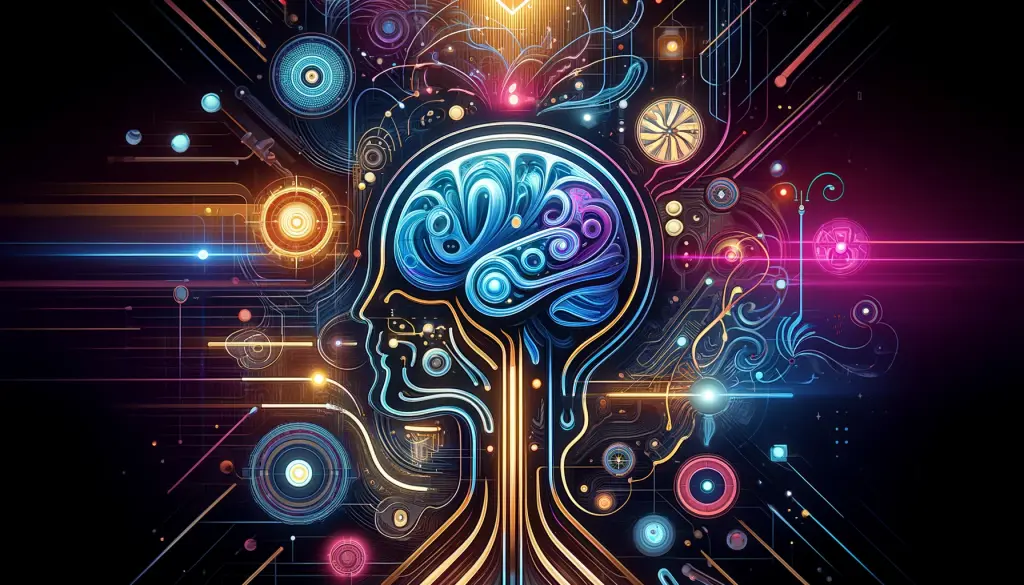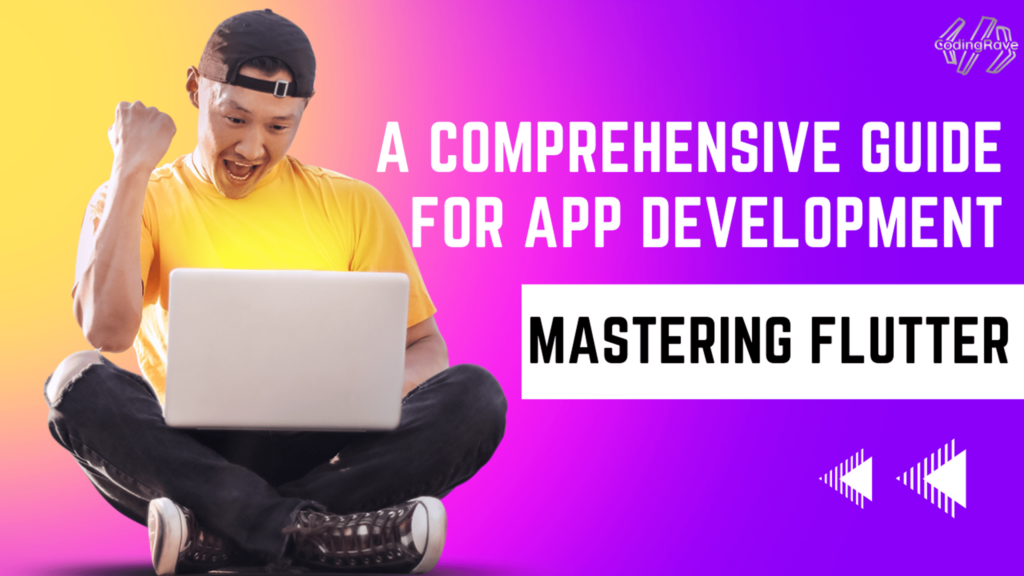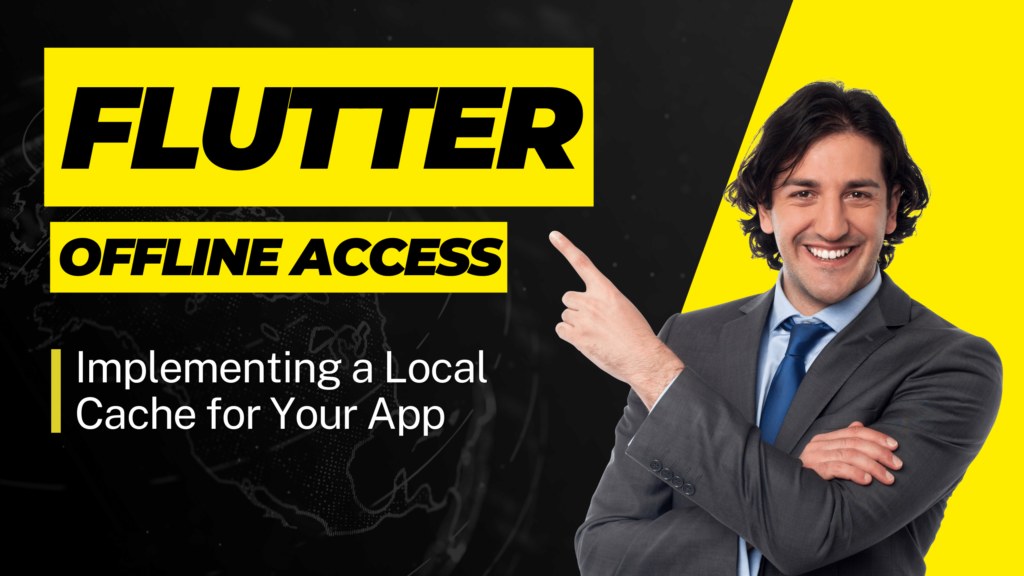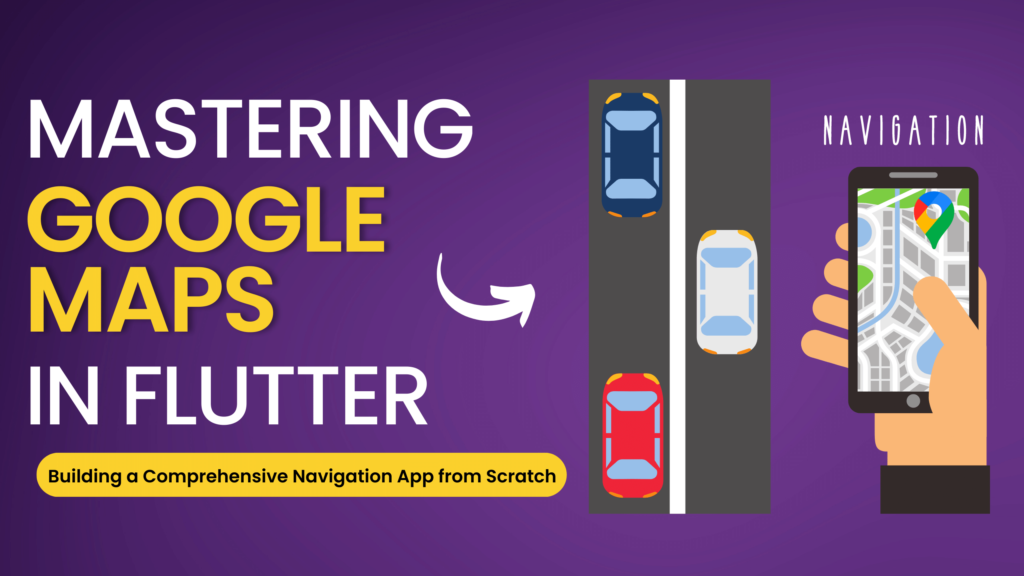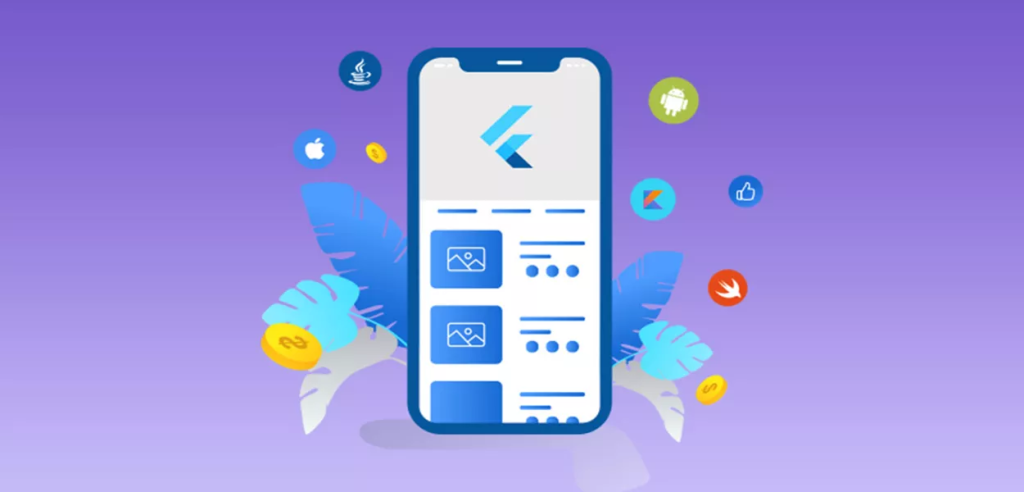The integration of Machine Learning (ML) in mobile applications has become a significant trend, revolutionizing the way apps interact with users and process data. This technological advancement has opened new avenues for creating smarter, more personalized, and interactive mobile experiences. Flutter, as a versatile and efficient cross-platform development framework, stands at the forefront of this innovation, offering developers the tools to seamlessly integrate ML features into their applications.
Machine learning’s ability to analyze large volumes of data, learn from user interactions, and make intelligent decisions has made it an invaluable asset in the mobile app development arena. In Flutter apps, ML can be leveraged to introduce a range of intelligent features, from predictive text and personalized content recommendations to advanced image and voice recognition capabilities. These features not only enhance the functionality of the app but also significantly improve user engagement and satisfaction.
The potential of ML in Flutter extends beyond mere functionality enhancements. It allows for the creation of dynamic and adaptive user interfaces, context-aware functionalities, and real-time data processing, which collectively contribute to a more intuitive and user-centric app experience. Whether it’s optimizing user journeys, automating tasks, or providing timely insights, ML can transform a standard Flutter app into a powerful tool that smartly caters to the evolving needs of users.
As we delve deeper into the realm of machine learning in Flutter app development, we will explore the tools, techniques, and best practices for integrating ML into Flutter apps, the benefits of this integration, and the innovative possibilities it unlocks for mobile app developers and users alike.
Fundamentals of Machine Learning in Flutter
Machine learning (ML) is a transformative technology that allows computers to learn from and make decisions based on data. In the context of mobile development, ML can be used to add a layer of intelligence to applications, enabling them to provide personalized experiences, automate tasks, and interpret complex data sets. When it comes to Flutter, the framework’s flexibility and rich ecosystem support the integration of ML to enhance app capabilities.
Basic Concepts of Machine Learning
- Supervised Learning: This involves training an ML model on a labeled dataset, where the model learns to make predictions or decisions based on input-output pairs.
- Unsupervised Learning: Here, the model identifies patterns and relationships in unlabeled data, used for clustering or association tasks.
- Reinforcement Learning: A method where the model learns to make decisions by performing actions and receiving feedback in a dynamic environment.
In mobile apps, these learning methods can power features like recommendation systems, image recognition, sentiment analysis, and more, providing users with smarter and more context-aware functionalities.
Applications of Machine Learning in Mobile Development
- Personalization: ML algorithms analyze user behavior and preferences to tailor content, notifications, and recommendations, enhancing the user experience.
- Image and Speech Recognition: Leveraging ML for recognizing images, objects, and speech to facilitate user interactions, like searching with images or voice commands.
- Predictive Analytics: Using historical data to predict future trends and behaviors, aiding in decision-making processes within the app.
ML Integration in Flutter
Flutter supports ML integration through various packages and APIs, allowing developers to leverage the capabilities of ML in their applications:
- TensorFlow Lite Flutter Plugin: TensorFlow Lite is a popular ML library for mobile and edge devices. The Flutter plugin enables the use of pre-trained TensorFlow models within Flutter apps, facilitating tasks like image classification, natural language processing, and more.
- Firebase ML Kit: This is a mobile SDK from Firebase that provides ready-to-use ML functionalities such as text recognition, face detection, barcode scanning, and label recognition, easily integrable into Flutter apps.
- Custom ML Models: Developers can also integrate custom ML models built with various ML frameworks into their Flutter apps using platform-specific APIs or third-party packages, catering to specific app requirements and functionalities.
By understanding the fundamentals of machine learning and its applications in mobile development, along with how Flutter supports ML integration, developers can create feature-rich, intelligent, and highly responsive mobile applications that stand out in the competitive app market.
Key ML Features for Flutter Apps
Integrating machine learning (ML) into Flutter apps unlocks a spectrum of capabilities that can significantly enhance the user experience. Here are some of the key ML features that are particularly impactful in mobile applications developed with Flutter:
Predictive Analytics
- Predictive Text Input:
- ML can be used to improve text input experiences in Flutter apps, offering suggestions and completions based on the user’s typing history and context. This feature not only speeds up the input process but also enhances accuracy.
- User Behavior Predictions:
- By analyzing user activity and engagement patterns, ML algorithms can predict future behaviors and preferences. This insight allows developers to create more personalized app experiences, optimizing user engagement and satisfaction.
- Personalized Content Recommendations:
- ML-driven recommendation systems can analyze a user’s past interactions, preferences, and demographic information to suggest relevant content, products, or services, significantly enhancing the personalization of the app.
Image and Voice Recognition
- Image Recognition:
- Integrating image recognition in Flutter apps enables functionalities like scanning documents, identifying products, or even diagnosing medical conditions from images. Utilizing libraries like TensorFlow Lite or Firebase ML Kit, developers can implement sophisticated image recognition features that respond to the specific needs of the app.
- Voice Recognition:
- Voice recognition capabilities allow users to interact with apps through voice commands, making the apps more accessible and user-friendly. This feature is particularly useful in scenarios where hands-free operation is preferred, such as while driving or cooking.
- Enhanced Accessibility:
- Image and voice recognition features not only enhance user interaction but also improve accessibility for users with disabilities. For example, voice recognition can aid users with visual impairments, while image recognition can help in translating text from images into spoken words.
By leveraging predictive analytics, image, and voice recognition, Flutter apps can offer more intuitive, personalized, and accessible user experiences. These ML features not only make the apps smarter but also help in building a deeper connection with users, ultimately leading to higher user retention and satisfaction.
Tools and Libraries for ML Integration in Flutter Apps
Integrating machine learning (ML) into Flutter apps is facilitated by a variety of powerful tools and libraries. These resources enable developers to incorporate advanced ML features into their applications seamlessly. Here’s an overview of some popular ML tools and libraries compatible with Flutter and the steps for their integration:
TensorFlow Lite
- Overview: TensorFlow Lite is a lightweight version of TensorFlow, designed for mobile and edge devices. It enables the execution of ML models on-device, offering fast inference with low latency.
- Features: TensorFlow Lite supports a wide range of ML models, including those for image classification, natural language processing, and object detection.
- Integration Steps:
- Include the TensorFlow Lite Flutter plugin in your project’s
pubspec.yamlfile. - Download or train a TensorFlow Lite model and add it to your Flutter project assets.
- Use the TensorFlow Lite API in Flutter to load and run the model with input data.
- Include the TensorFlow Lite Flutter plugin in your project’s
Firebase ML Kit
- Overview: Firebase ML Kit provides a set of easy-to-use and robust APIs that enable incorporating ML functionalities into apps without requiring in-depth knowledge of ML model building.
- Features: ML Kit offers features like text recognition, face detection, barcode scanning, image labeling, and language translation.
- Integration Steps:
- Add Firebase to your Flutter project by including the necessary Firebase plugins in the
pubspec.yamlfile. - Configure your Flutter app with Firebase using the Firebase console to enable ML features.
- Implement the desired ML Kit functionalities in your app using the provided APIs and services.
- Add Firebase to your Flutter project by including the necessary Firebase plugins in the
Custom ML Models
- Overview: For specific needs or advanced functionalities, developers can integrate custom ML models into Flutter apps. These models can be developed using ML frameworks like PyTorch, TensorFlow, or custom tools.
- Integration Steps:
- Develop or obtain a custom ML model and convert it to a format compatible with Flutter, typically TensorFlow Lite or a similar mobile-friendly format.
- Integrate the model into your Flutter app, similar to TensorFlow Lite integration, including handling model loading and inference.
- Create custom Flutter widgets or services to interact with the ML model, processing input data and displaying output.
By leveraging these tools and libraries, Flutter developers can incorporate sophisticated ML features into their apps, enhancing the overall functionality and user experience. Proper setup and configuration of these ML resources are crucial to ensure seamless operation and optimal performance of the ML features within Flutter apps.
Building an ML-Powered Feature in Flutter: Natural Language Processing Service
In this walkthrough, we’ll explore how to design and implement a natural language processing (NLP) service in a Flutter app, focusing on sentiment analysis, which can interpret and categorize user feedback.
1. Defining the Feature and Objectives
- Feature Overview: A sentiment analysis tool integrated within the app to evaluate user feedback, comments, or reviews, categorizing them into positive, negative, or neutral sentiments.
- Objectives: To enhance customer service by automatically analyzing user sentiment, aiding in quickly addressing concerns and understanding user satisfaction.
2. Data Collection and Model Training
- Data Collection: Gather a dataset of text feedback with labeled sentiments. Use public datasets or compile your own with user reviews relevant to your app’s context.
- Model Training: Using an ML platform like TensorFlow or PyTorch, train a sentiment analysis model on your dataset. You can also utilize pre-trained NLP models and fine-tune them on your specific dataset for better accuracy.
3. Model Conversion and Integration
- Conversion to Mobile Format: Convert the trained model to a mobile-friendly format like TensorFlow Lite to ensure compatibility with Flutter.
- Integration in Flutter: Import the TensorFlow Lite model into your Flutter project. Use the TensorFlow Lite Flutter plugin to load and run the model, processing user input text and outputting sentiment predictions.
4. User Interface Design
- Feedback Input Interface: Design a user-friendly interface for inputting feedback, such as a text field within a feedback form or a comment section.
- Displaying Analysis Results: Implement a UI component that displays the sentiment analysis results in an understandable and visually appealing manner, like using colors or emoticons to represent positive, negative, or neutral sentiments.
5. Technical Considerations
- Performance Optimization: Ensure the model runs efficiently on mobile devices. Optimize the model size and inference speed to minimize resource usage and ensure a smooth user experience.
- Data Privacy: Handle user feedback data responsibly. Implement data protection measures and ensure compliance with privacy regulations, particularly if feedback data is sent to a server for processing.
- User Feedback and Iteration: Collect user feedback on the NLP feature to gauge its effectiveness and user satisfaction. Use insights from this feedback to refine and improve the feature in subsequent iterations.
By following these steps, you can successfully design and implement an ML-powered NLP feature in your Flutter app, providing valuable insights into user sentiment and enhancing the overall user experience. This process not only demonstrates the integration of advanced ML capabilities in Flutter but also highlights the importance of thoughtful design and technical rigor in developing intelligent mobile applications.
Testing and Optimizing ML Features in Flutter Apps
Ensuring that machine learning (ML) features in Flutter apps are accurate, efficient, and effective requires thorough testing and optimization. Here are some best practices and techniques to guide this process:
Testing ML Features
- Unit and Integration Testing:
- Conduct unit tests to check individual ML model functions and integration tests to ensure the model works correctly within the app context.
- Use Flutter’s testing framework to automate these tests, verifying the accuracy of model outputs against expected results.
- User Testing:
- Engage real users in testing to gather feedback on the ML feature’s usability and effectiveness. This can help identify any issues in user interaction and overall user experience.
- Performance Testing:
- Measure the ML feature’s performance in terms of speed and resource consumption. Ensure it operates efficiently across different devices and under various conditions.
- Continuous Testing:
- Implement continuous testing in the development pipeline to catch issues early and ensure the ML feature remains robust against changes in the app or data.
Optimizing ML Model Performance
- Model Pruning:
- Reduce the complexity of the ML model by pruning unnecessary or redundant parts of the neural network. This can lead to a lighter model that performs faster without significant loss in accuracy.
- Quantization:
- Apply quantization to reduce the precision of the model’s numerical parameters (from 32-bit floats to 8-bit integers, for example). This reduces the model size and can speed up inference, particularly on mobile devices.
- Effective Data Management:
- Optimize data handling within the app to ensure that only relevant and necessary data is processed by the ML model, reducing latency and computational load.
- Model Caching:
- Implement caching mechanisms for the ML model’s output if applicable, especially for predictions that don’t need real-time processing. This can save computational resources and improve app responsiveness.
- Model Updates and Maintenance:
- Regularly update the ML model to reflect new data and insights. Automate the update process where possible to maintain the model’s effectiveness over time.
- Utilizing Specialized ML Hardware:
- Take advantage of specialized ML hardware on devices, such as neural engine processors, to improve performance and efficiency of ML computations.
By adhering to these testing and optimization best practices, developers can ensure that the ML features in their Flutter apps are not only functional and user-friendly but also optimized for performance, providing a seamless and effective user experience.
Real-World Case Studies: ML Integration in Flutter Apps
Examining real-world applications of machine learning (ML) in Flutter apps can provide valuable insights into the practical benefits and challenges of this technology. Here are some case studies of successful ML feature integrations in Flutter apps:
Case Study 1: Health and Fitness App with Predictive Analytics
- Overview: A health and fitness app integrated ML to analyze user activity and health data, providing personalized workout and nutrition plans based on predictive analytics.
- Benefits:
- Increased user engagement and retention due to personalized experiences.
- Improved health outcomes for users, evidenced by tracking progress and feedback.
- Challenges:
- Ensuring data privacy and security, given the sensitive nature of health data.
- Balancing the computational demands of ML processing with the need for real-time user feedback.
- Lessons Learned:
- The importance of robust data encryption and privacy policies.
- The need for efficient ML models that can operate effectively on mobile devices.
Case Study 2: E-commerce App with Image Recognition
- Overview: An e-commerce platform implemented an image recognition feature in their Flutter app, allowing users to search for products by uploading photos.
- Benefits:
- Enhanced user experience with intuitive search options.
- Increased sales conversions by quickly matching user photos with product inventory.
- Challenges:
- Developing an ML model capable of accurately recognizing a wide range of products.
- Integrating the model into the Flutter app without compromising performance.
- Lessons Learned:
- The value of a comprehensive and diverse training dataset for the ML model.
- The necessity of continuous testing and optimization to maintain high accuracy and performance.
Case Study 3: Language Learning App with Natural Language Processing
- Overview: A language learning application used NLP features in their Flutter app to offer real-time language translation and pronunciation guides.
- Benefits:
- Improved learning outcomes by providing instant feedback and correction.
- Increased global reach of the app by supporting multiple languages.
- Challenges:
- Achieving accurate translation and phonetic transcription across languages.
- Managing the large size and computational requirements of NLP models.
- Lessons Learned:
- Leveraging cloud-based ML solutions to handle complex computations.
- Importance of cultural and linguistic nuances in developing language learning tools.
These case studies highlight how integrating ML features in Flutter apps can lead to enhanced user experiences and business outcomes. They also underscore the challenges of working with ML, such as managing data privacy, computational demands, and model accuracy. Future ML projects in Flutter can benefit from these insights, emphasizing the need for careful planning, robust testing, and ongoing optimization to succeed in the dynamic landscape of mobile app development.
Ethical Considerations and Data Privacy in ML-Integrated Flutter Apps
Integrating machine learning (ML) into Flutter apps brings a set of ethical considerations and data privacy challenges that developers must navigate carefully. Understanding these implications and implementing strategies to address them is crucial to maintain user trust and comply with legal standards.
Ethical Implications of Using ML
- Bias and Fairness:
- ML models can inadvertently perpetuate biases present in their training data, leading to unfair or discriminatory outcomes. It’s essential to use diverse and representative datasets and regularly audit models for biased decision-making.
- Transparency and Explainability:
- Users should be able to understand how and why an ML-powered feature in the app makes certain decisions or recommendations. Striving for transparency in ML processes helps build trust and allows users to make informed decisions.
- User Consent and Autonomy:
- Ensuring that users are aware of and consent to the data collection and processing activities of ML features is vital. Users should have the autonomy to opt in or out of these features and control their personal data.
Data Privacy and Security Strategies
- Data Protection Measures:
- Implement strong encryption for data at rest and in transit, use secure protocols for data transmission, and adhere to best practices in cybersecurity to protect user data from unauthorized access and breaches.
- Privacy by Design:
- Incorporate data privacy considerations into the design phase of the app development. Minimize the collection of personal data, anonymize data where possible, and only use data that is necessary for the intended ML functionalities.
- Compliance with Regulations:
- Ensure that the app complies with data protection regulations relevant to the user’s region, such as GDPR in Europe or CCPA in California. This includes providing clear privacy policies, obtaining user consent for data processing, and allowing users to access, correct, or delete their personal data.
- Regular Audits and Monitoring:
- Conduct regular audits of the ML features and data handling practices to identify and mitigate any privacy risks or compliance issues. Monitoring for unusual activity can also help detect and respond to potential data breaches promptly.
By carefully considering the ethical implications of ML and implementing robust data privacy and security measures, developers can create Flutter apps that not only leverage the power of ML but also respect user rights and maintain high ethical standards. This approach fosters trust and ensures a sustainable and responsible use of ML technologies in mobile app development.
Conclusion
In conclusion, integrating machine learning (ML) into Flutter apps presents a significant opportunity to enhance functionality, personalize user experiences, and innovate in mobile app development. However, it also brings forth ethical considerations and data privacy challenges that must be addressed with care and diligence.
Ethical considerations like bias, transparency, and user consent are paramount to building trust and ensuring fairness in the use of ML technologies. Developers must strive to create ML systems that are not only effective but also fair, understandable, and respectful of user autonomy and decision-making.
Data privacy and security are equally critical, necessitating stringent measures to protect user data from unauthorized access and breaches. Adherence to privacy regulations, implementation of strong encryption and data protection practices, and continuous monitoring and auditing are essential to maintaining the integrity and trustworthiness of ML-integrated Flutter apps.
By navigating these ethical and privacy challenges thoughtfully, developers can harness the full potential of ML in Flutter to create innovative, user-centric, and responsible mobile applications. The journey of integrating ML into Flutter apps is one of continuous learning and adaptation, requiring a commitment to ethical principles, user privacy, and ongoing optimization to truly realize the transformative power of machine learning in mobile app development.

